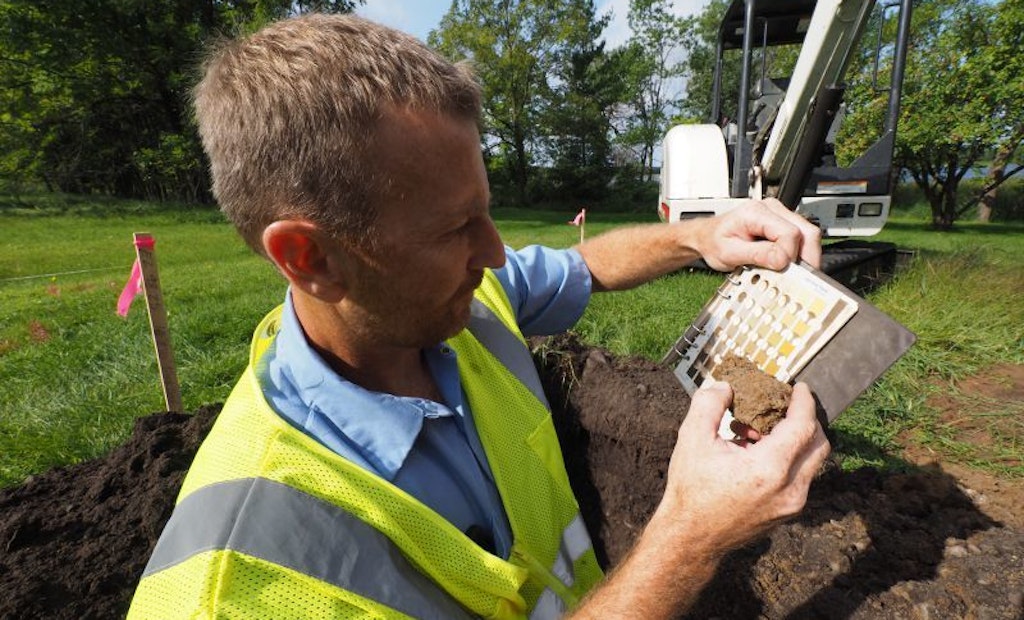
Interested in Septic Tanks?
Get Septic Tanks articles, news and videos right in your inbox! Sign up now.
Septic Tanks + Get AlertsThe Minnesota Pollution Control Agency adopted new septic rules in 2008, and then further refined them in 2011. One of the state’s rules requires counties to verify soils before issuing permits, and regulators often pass the responsibility on to system designers.
The rules also focus on the percentage of rock fragments in sandy soil. Rock fragments include gravel, stones and cobble larger than 2 mm. “The greater the percentage of rock in a foot of soil, the less treatment credit it has,” says Tim Haeg, advanced designer and owner of Watab in St. Joseph, Minnesota. “Soils with greater than 50 percent rock fragments larger than 2 mm have no treatment credit.” Furthermore, dispersal media cannot contact soils with greater than 35 percent rock fragments.
.jpeg) Haeg works mostly in Stearns County, where glacial outwash plains have zero treatment areas. “Initially, many contractors believed they’d have to build mound systems,” says Haeg. “There was a lot of stress in how to deal with those sites because they could dig to China without hitting the water table and establishing the required 3 feet of vertical separation.”
Haeg works mostly in Stearns County, where glacial outwash plains have zero treatment areas. “Initially, many contractors believed they’d have to build mound systems,” says Haeg. “There was a lot of stress in how to deal with those sites because they could dig to China without hitting the water table and establishing the required 3 feet of vertical separation.”
Haeg took a step back to gain fresh insight. “There’s a difference between a limiting condition such as water tables or seasonally high saturated soils and soils that don’t offer treatment credits,” he says. His design solution was to excavate the no-credit soil, bring in clean washed sand, and build on top of it. Now soil corrections are becoming commonplace to mitigate unbuildable sites.
Minnesota’s numerous lakes created another challenge for Haeg. A lakeside property had a floodplain elevation that required a mound so tall that the footprint wouldn’t fit on the lot. Haeg’s solution split the system into a single-pass sand filter inside a PVC-lined basin, then pumping the effluent to a shorter mound with fewer chambers (Infiltrator Water Technologies).
“We achieved the 3 feet of vertical separation in two stages,” he says. “Wastewater passed through 2 feet of sand, then into the mound with 12 inches of vertical separation. We called it our 2+1 system and have several in service.”
Read more about Watab in a full profile in the December issue of Onsite Installer.





